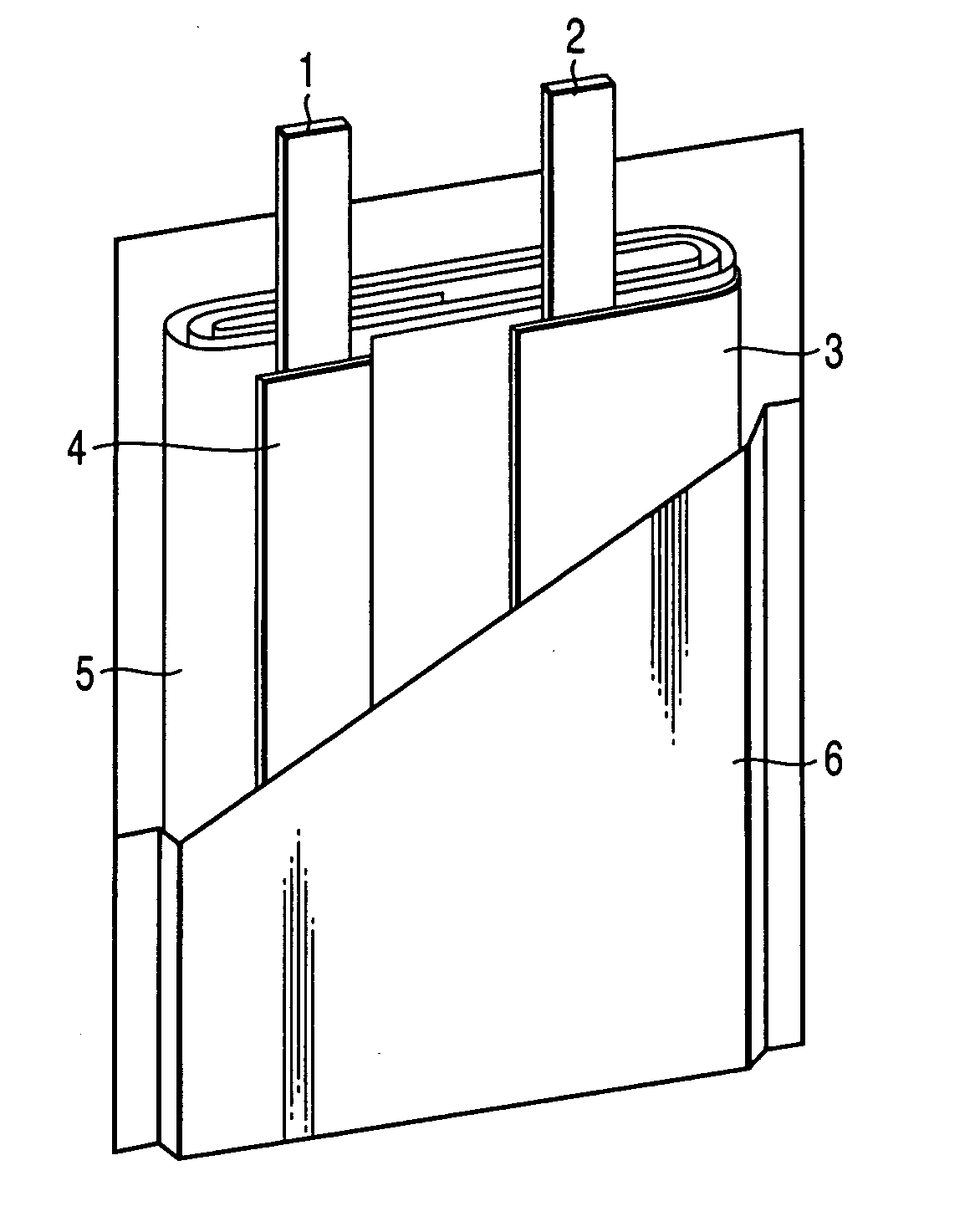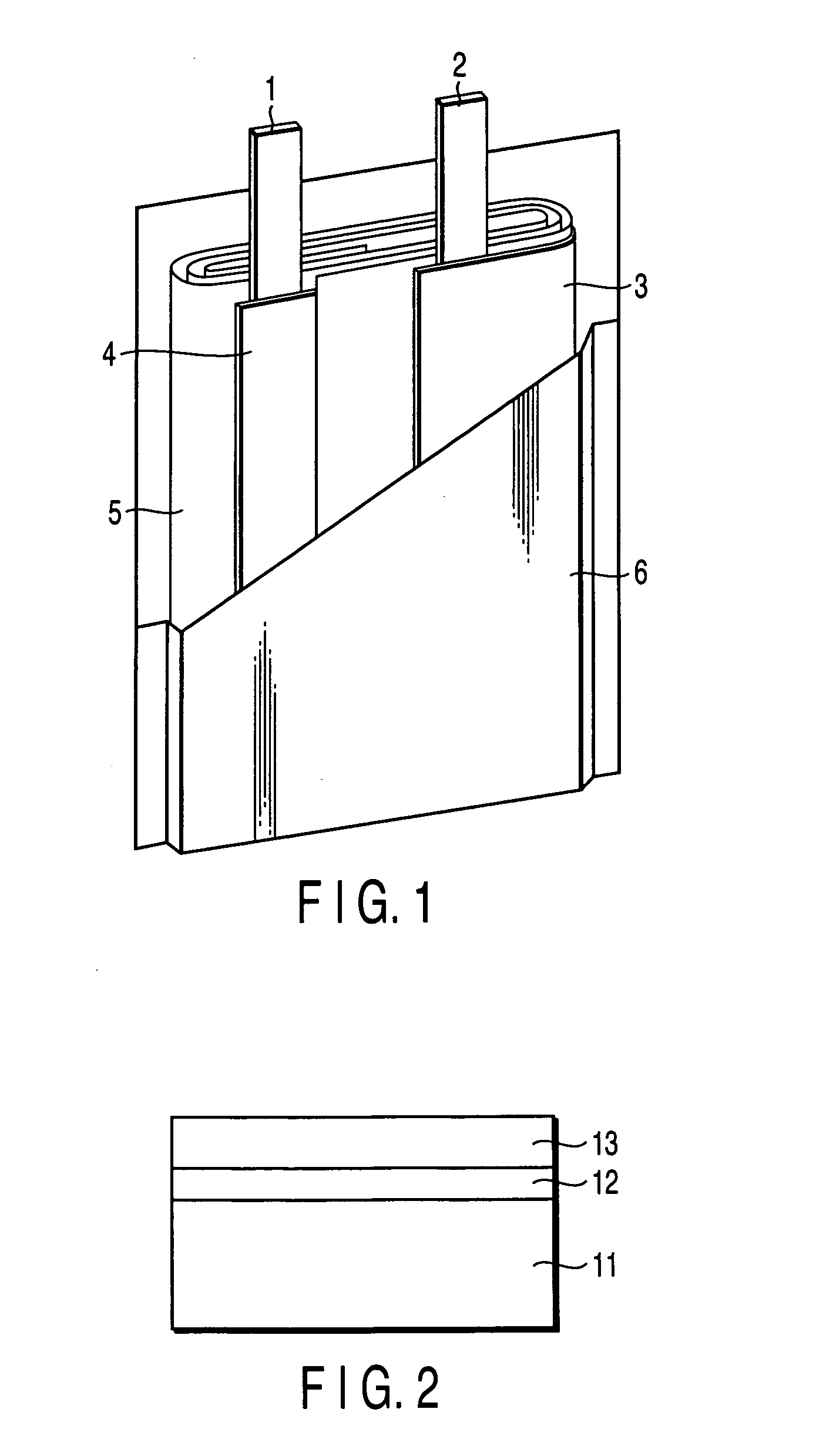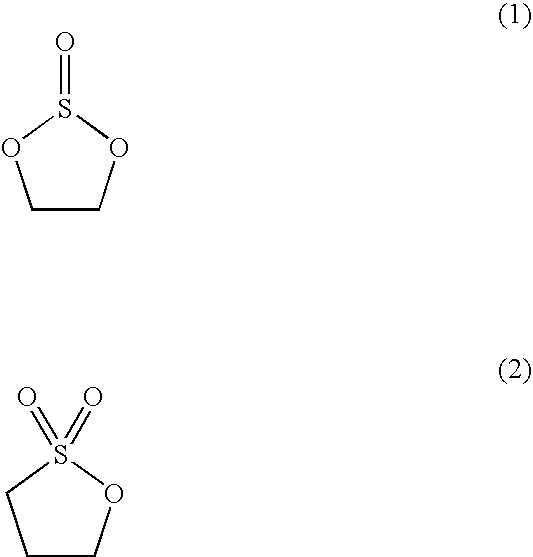Nonaqueous electrolyte secondary battery
a secondary battery and electrolyte technology, applied in the field of nonaqueous electrolyte secondary batteries, can solve the problems of poor electrical conductivity defective lithium titanium oxide, inferior high rate characteristics of lithium titanium oxide, etc., and achieve excellent high rate characteristics
- Summary
- Abstract
- Description
- Claims
- Application Information
AI Technical Summary
Benefits of technology
Problems solved by technology
Method used
Image
Examples
examples 12 to 23
[0129] Manufactured were nonaqueous electrolyte secondary batteries similar to those for Examples 1 to 11, except that coke having a specific surface area of 80 m2 / g as measured by the BET method, a layer spacing d002 of 0.3504 nm, and a crystallite size Lc of 1.89 nm was used as the conductive agent in place of acetylene black used in Examples 1 to 11. These nonaqueous electrolyte secondary batteries were evaluated as in Examples 1 to 11. Table 2 shows the results.
examples 24 to 35
[0130] Manufactured were nonaqueous electrolyte secondary batteries similar to those for Examples 1 to 11, except that graphite having a specific surface area of 10 m2 / g as measured by the BET method, a layer spacing d002 of 0.3356 nm, and a crystallite size Lc of 100 nm was used as the conductive agent in place of acetylene black used in Examples 1 to 11. These nonaqueous electrolyte secondary batteries were evaluated as in Examples 1 to 11. Table 3 shows the results.
[0131] The composition of the film formed on the surface of the negative electrode of the secondary battery for each of Examples 12 to 35 was analyzed as in Example 1. The film for each of these Examples was found to include an inorganic layer formed of Li2SO3 and LiF and an organic layer containing at least one compound selected from the group consisting of ROSO2Li, ROCO2Li, R═CH3(CH)CH2 and R═CH2—CH2.
TABLE 2High temperature cycleHighcharacteristic testtemperatureHighstoragetemperaturecharacteristicsHigh rate(45° C...
PUM
| Property | Measurement | Unit |
|---|---|---|
| crystallite size | aaaaa | aaaaa |
| crystallite size | aaaaa | aaaaa |
| specific surface area | aaaaa | aaaaa |
Abstract
Description
Claims
Application Information
 Login to View More
Login to View More - R&D
- Intellectual Property
- Life Sciences
- Materials
- Tech Scout
- Unparalleled Data Quality
- Higher Quality Content
- 60% Fewer Hallucinations
Browse by: Latest US Patents, China's latest patents, Technical Efficacy Thesaurus, Application Domain, Technology Topic, Popular Technical Reports.
© 2025 PatSnap. All rights reserved.Legal|Privacy policy|Modern Slavery Act Transparency Statement|Sitemap|About US| Contact US: help@patsnap.com



